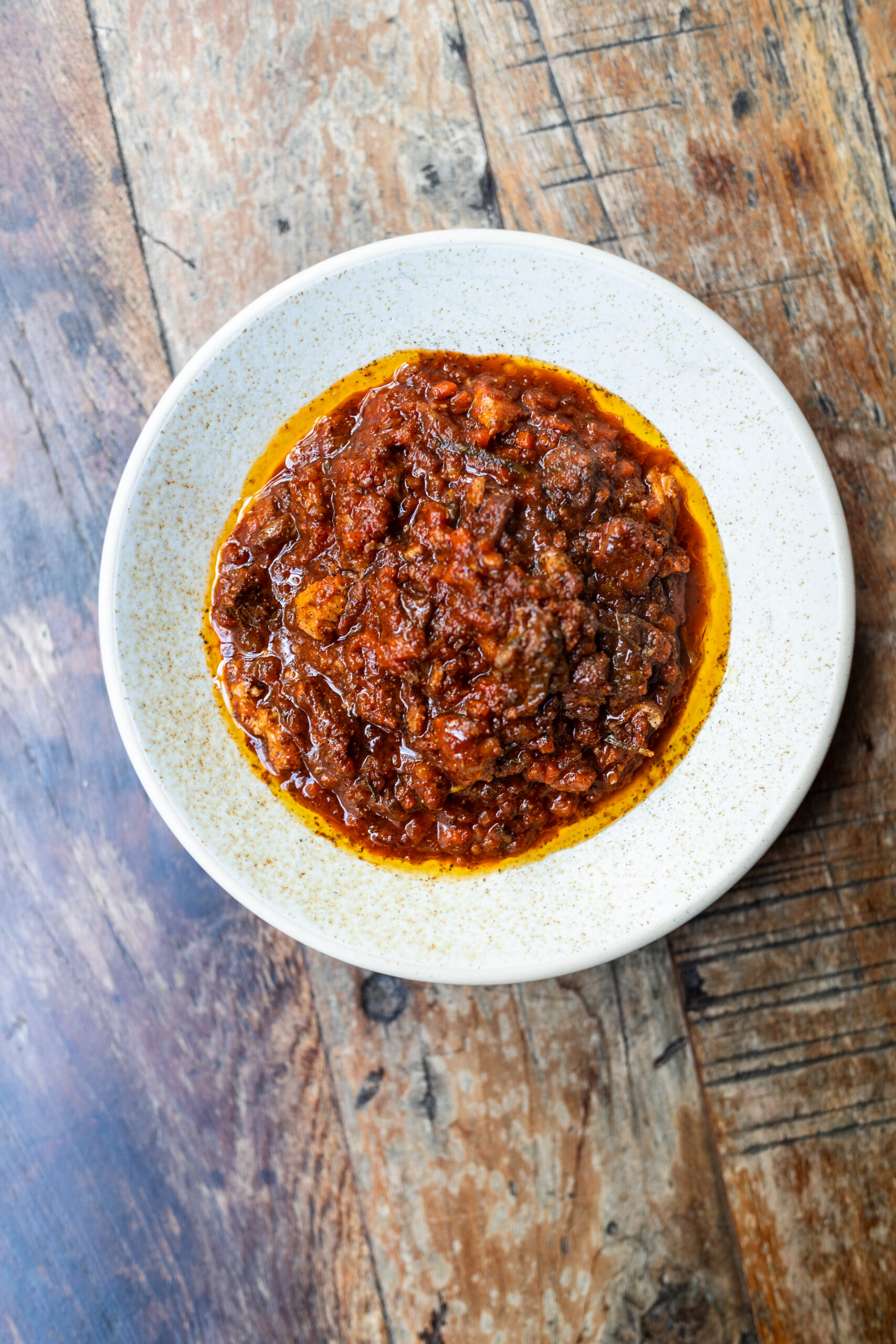This beautiful pork and beef ragu is fantastic over your favourite pasta or gnocchi; store-bought or homemade if you’re up for the challenge. Or you could go simple, comforting and cosy with some freshly baked crusty bread.

What is a ragu?
Pork and Beef Ragu Sauce is comforting, rich and hearty. Not many dishes compare or compete with the depth and versatility of this sauce. This traditional Italian dish remains a favourite in many households and packs a powerful, flavourful punch. Its depth and versatility mean it can be adapted and enjoyed in countless ways.
This sauce combines rich and savoury profiles for a pleasant aftertaste. The blend of onions, garlic and herbs compliment the meatier flavours of the fatty pork and beef. The quality of the ingredients is what elevates this dish from a staple sauce to a satisfying meal. Traditionally it’s served with pasta dishes, such as tagliatelle and rigatoni.
Where does ragu originate from?
Ragu is special. It was the brainchild of Alberto Alvisi. Alberto was the Chef to the Cardinal of Imolaa; the advisor to the Pope.
The term “ragu” is derived from the French word “ragout,” which means a dish of meat and vegetables.
This dish quickly became a staple in Italy. The idea of combining pork and beef in ragu had humble beginnings. Today it transcends borders.
There’s no specific recipe; ask 5 Italian nonnas to cook it and you’ll get 5 different ways. For example in Naples, the ragu often includes meats such as sausages and meatballs. In Bologna, a touch of milk or cream is added to soften the acidity of the tomatoes.
The only universal agreement? Cook it for an extended period of time. This recipe is our take.
Do you slow cook a ragu?
The trick to an excellent ragu sauce is to slow-cook it and let it simmer for approximately 4 hours to let the meat soften. The flavours of the meat gently infuse with the sauce, allowing for a rich and thick sauce with plenty of flavour and depth.
What can you serve with ragu?
Versatility is the beauty of a ragu. The most common way to serve a ragu is with pasta, but it can be enjoyed with bread and vegetables.
A classic tagliatelle or pappardelle are the classic al dente pasta choices.
The velvety texture of the sauce coats every pasta piece, providing the balance of acidic tomatoes and rich meat.
Similar to pesto sauce (see recipe here), a hearty pasta such as gnocchi holds the robust flavours well for a warming meal.
Despite being a warming, rich sauce, the meal itself doesn’t have to be heavy!
A ragu can be served with lighter options such as a side salad and a zesty dressing. The salad and tang of the dressing can cut through the ragu for an enjoyable and complex meal.
Ragu can also be spooned over crusty, toasted bread for a spin on the classic bruschetta dish or a topping for sautéed vegetables.
However you choose to enjoy this sauce, using a slice of bread from this same loaf to soak up the sauce at the end means there is no food waste and you can enjoy every morsel.
Is a ragu healthy?
Beef and pork ragu is equally delicious and nutritious. It provides a good source of protein, iron, and essential vitamins.
PrintPork & Beef Ragu
- Author: Fallow
- Prep Time: 10
- Cook Time: 5 hours
- Total Time: 5 hours 10 minutes
- Yield: 6 people 1x
- Cuisine: Italian
Ingredients
- 4 tbsp olive or rapeseed oil
- 500g pork belly Slices, cubed.
- 1 kg dry aged beef chuck steak, cubed.
- 100g pancetta lardons
- 1 large onion finely chopped.
- 1 large carrot finely diced.
- 1 stick celery finely diced.
- 2 cloves garlic, sliced.
- 3 tbsp tomato paste
- 250ml dry red wine
- 800 g crushed canned tomatoes
- 250 ml good quality beef stock
- 2 bay leaves
- Sprig of rosemary
- Sprig of thyme
1/2 tsp chili flakes
Salt and pepper to taste
Instructions
- In a large, heavy-bottomed pot or cast iron, preheat the oil on a high heat. Once hot add in the cubes of pork belly. Allow the fat to render. Caramelise on all sides then remove from the pot. Whilst hot, add in the cubes of beef and then the pancetta.
- Strain off the fat from the beef and pancetta. Keep the fat to one side. In the same pan add a little of the fat back in and then the onion, carrot, and celery. Sauté on a medium heat until the vegetables start to caramelise and soften. Add in the chilli flakes, herbs and garlic and sauté for a further 1 minute.
- Once it’s nicely aromatic add in the tomato paste and stir well. Allow the tomato paste to cook for roughly 4 minutes being careful not to let it catch on the bottom of the pot.
- Deglaze the pan with the red wine and give it a good stir before leaving to reduce by at least half.
- Once significantly reduced, add in the cooked meat followed by the crushed tomatoes and beef stock. Gently stir everything together allowing the liquid to completely cover the pork belly and beef. If it doesn’t, add in a little more beef stock to cover.
- Bring the pot to a simmer then reduce the heat to low. Place a lid slightly ajar on the pot and leave to cook for 3 to 4 hours or until the beef falls apart. This can be done on the hob or in the oven.
- Remove the lid and reduce for a further 30 minutes and adjust the seasoning with salt and pepper to taste.
- Serve with freshly chopped parsley, salt, pepper and more oil.
Notes
- Cook for 3 to 4 hours with the lid on (ajar), either on the hob or in the oven.
- If you want a thicker sauce take the lid of and continue to cook for 30 minutes, or until the desired consistency is achieved.

